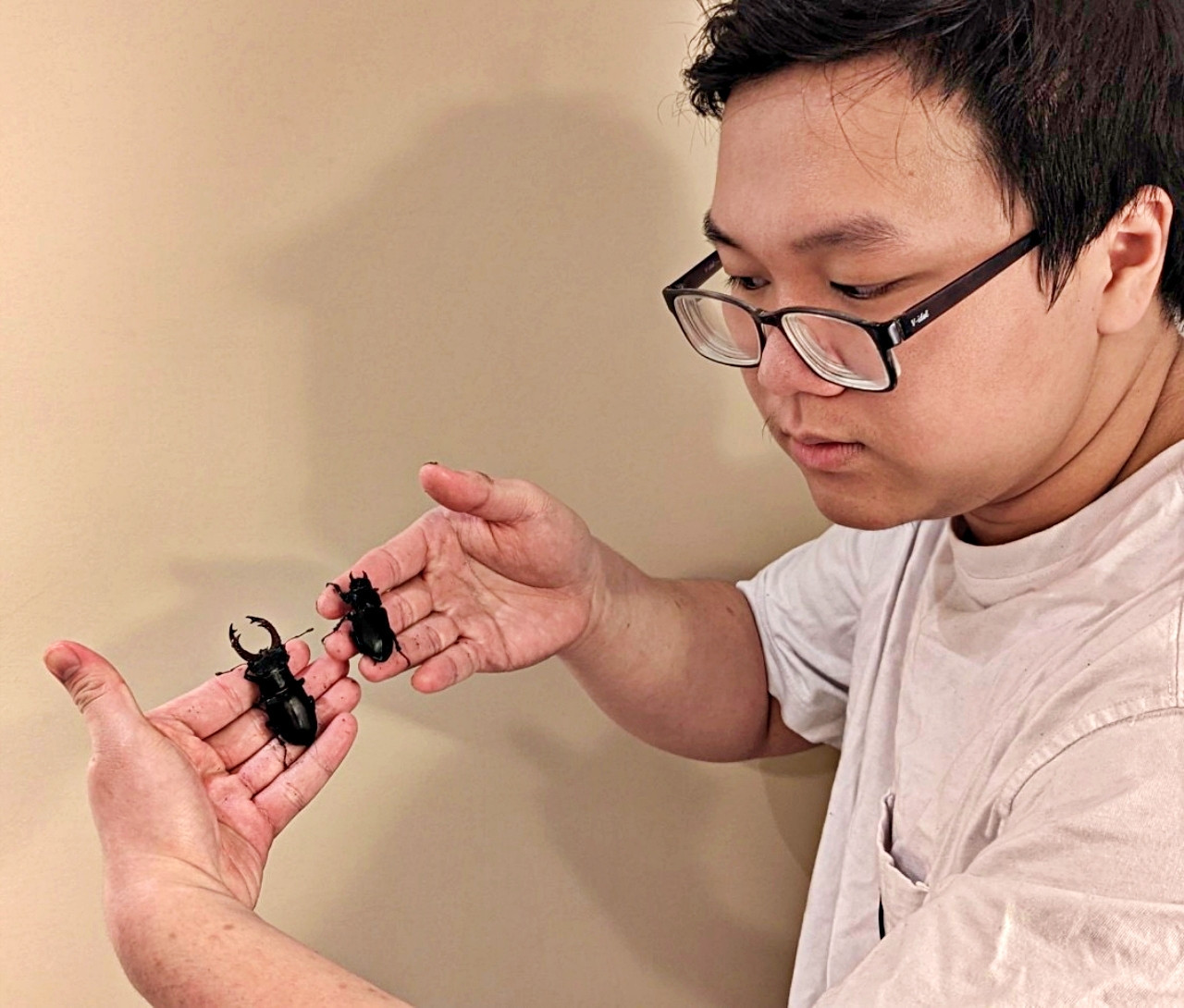
Ten years ago, Le Quang Tu, born in 2000, who is studying in Canada, learned about beetles through Japanese comics. The different shapes, sizes and colors attracted the 12-year-old.
Then they tried to look for beetles in Vietnam to breed and take care of. This became a passion.
The young man loves beetles so much that he has maintained his hobby in Canada.
“I began collecting beetles in 2012 and I continued when I left to study in Canada. Beetle breeding has become a passion. However, I now focus on reproduction, and breeding larvae and adult beetles,” he said.
Meanwhile, Tran Van Quang, 25, from Da Lat, said he breeds beetles as he considers this a way to revive his childhood memories. When he was small, his father and elder brother often caught beetles for him to breed.
“When I came to HCM City to study, a friend of mine showed me a bo kien vuong (Dynastinae), which reminded me of my childhood. From that time, I began learning and playing with beetles."
He says the breeding of beetles in Vietnam is becoming popular. There are many communities of beetle hobbyists. The breeders exchange experiences about breeding and insects.
In HCM City, Nguyen Huynh Anh Kiet, 21, is well known for his valuable collection of beetle specimens. Kiet has been collecting beetles since 2015 and considers his insects as pets. He said in some foreign countries, breeding beetles is popular, especially in Japan and Thailand.
In these countries, people build rooms with modern equipment just to breed beetles. In Vietnam, people spend money on cages and feed. They also use refrigerators to create a living environment with a temperature suitable to their natural living environment. Kiet said the hobby is costly.
Beetles are offered on online markets and among groups of collectors. In addition to common beetles which can be easily found and bought in Vietnam, young people also spend big money on valuable imported insects.
The price of insects ranges from hundreds of thousands of dong to over 10 million dong, depending on color, size and scarcity.
Tu says he has realized that many insect species are on the verge of extinction. So the student is always thinking about how to protect the insect.
In Canada, Tu collects and breeds precious insects, but also studies and tries to conserve them.
Tu collects breeding beetles, provides nutrition, and finds an ideal place for female beetles to lay eggs. After larvae molt and turn into beetles, another process begins with F1 generation.
For beetles that reproduce easily, after harvesting F1s, Tu releases them into the wild. As for very rare species which don’t easily reproduce, Tu retains and breeds them. He records their daily growth to contribute to scientific research.
“I take notes of the characteristics of F1, F2, F3, etc, the places where I collect samples, the origin, temperature of food, the time the beetles mate,” Tu said.
With this method, Tu has succeeded in reproducing Lucanus cervus (the European stag beetle), the most famous beetle species, rarely seen and very precious, which only appears in the European market.
Quang also wants to conserve rare and precious beetle species. But he doesn’t want to purchase and collect rare and precious beetles listed in the Red Book. He also breeds them and releases them into nature.
Kiet tries to conserve beetles by collecting dead insects and making specimens. He has a collection of over 200 beetle specimens.
Ha Nguyen